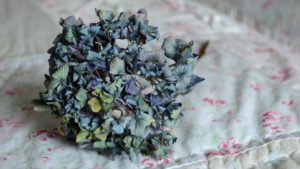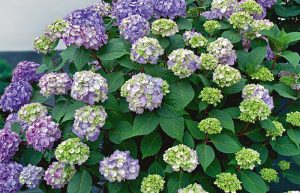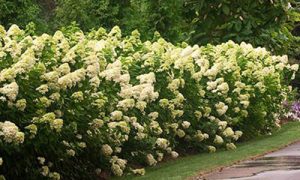Imagine if Hydrangeas were not just pretty shrubs to add to your garden or showy cut flowers for filling vases. What if they were your job? White Flower Farm’s Product Development Coordinator and shrub expert Ray Hinman knows what that’s like. On a daily basis, he thinks about what plant breeders are doing and what our customers want when it comes to Hydrangeas. He has a foot in two worlds – one very scientific, in which topics like Hydrangea remontance (rebloom) and cold hardiness are weighty concerns, and the other down-to-earth, in which the beauty and performance of Hydrangeas are really all that matter.

Ray Hinman pictured by a hedge of Hydrangea paniculata Little Quick Fire® in the gardens at White Flower Farm.
Just as Ray visits test gardens and attends trade shows to assess the latest trends in Hydrangea production, he also learns from his own experiences growing Hydrangeas at home. If you’ve ever felt hard-pressed for time to care for your Hydrangeas, Ray understands (although, he admits, just five minutes of pruning while waiting with your kids for the school bus can really add up). He knows how crazy winter weather and spring freezes can blight one’s hopes for a great flower show come summer and fall.
So, while Ray spends much of his days giving Hydrangeas the “eye test” (comparing potential offerings with current ones), thinking about which varieties look best when taken out of a shipment box, or considering important sell-points such as color and the attraction of pollinators, he also likes to give gardeners practical advice to help them know and better care for their Hydrangeas. Here are 5 tips he wants to share:
1. Hydrangeas are great “anchor plants” for gardens.
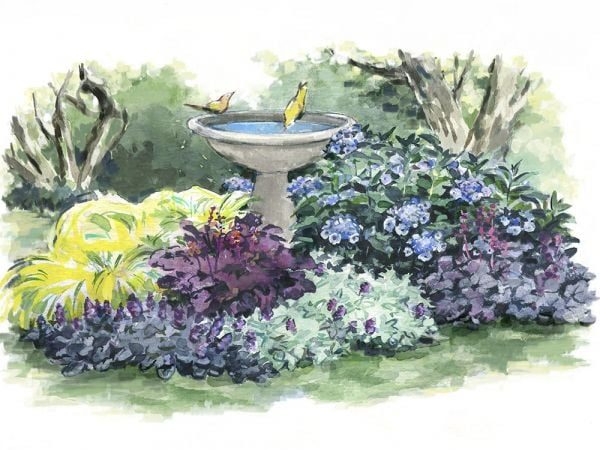
Our Small Space Shade Garden features one shrub to anchor the show, Hydrangea serrata Tiny Tough Stuff™.
This is especially true because of Hydrangeas’ long season of bloom. Use them to establish a new garden bed, accentuate an existing foundation or fence, or create a hedge. Since the flowers hang on from summer through fall, often turning color in the process (as does some Hydrangea foliage), there are many months of interest. It’s also possible to stage an even longer period of bloom by growing more than one variety of Hydrangea. For example, our native Smooth Hydrangeas (H. arborescens) start the flower show as early as mid-June. When teamed up with Panicle Hydrangeas (H. paniculata), they continue the display through fall – and winter, too, if you choose not to prune off the dried blossoms.
2. Flower color can help you identify your Hydrangea.
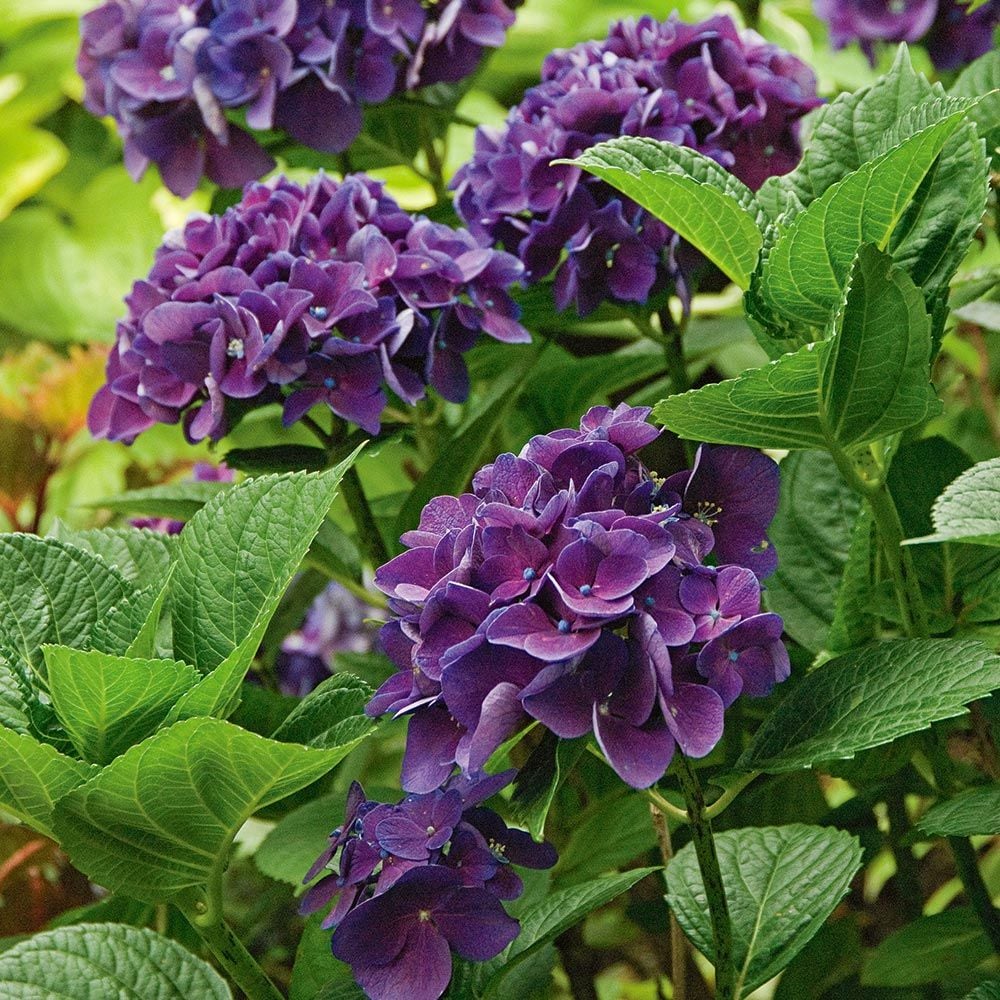
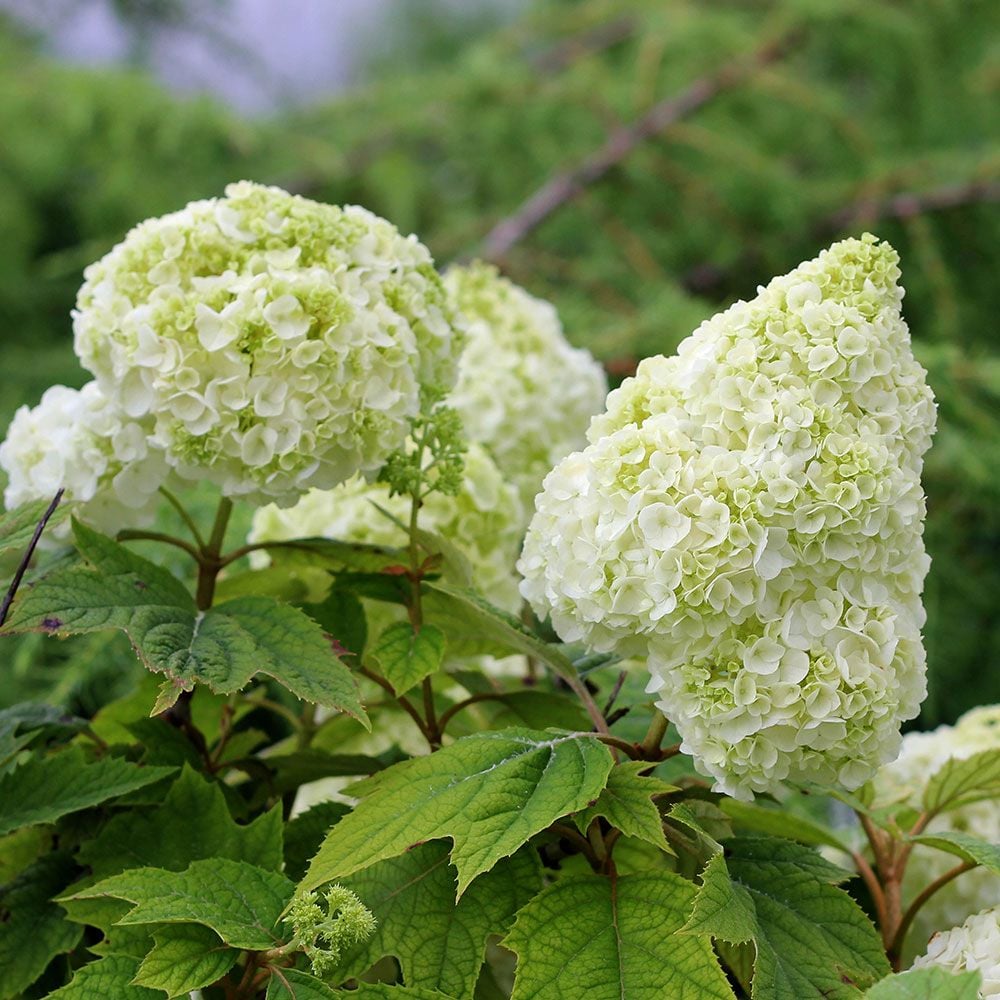
Hydrangea macrophylla Color Fantasy® (left) and Hydrangea quercifolia Gatsby Moon® (right). While the Bigleaf Hydrangea on the left can have raspberry red to deep purple flowers, our native Oakleaf Hydrangea only blossoms in hues of white, green, pink, or red.
Without a label, it can be difficult to know which Hydrangea you have. The three basic flower shapes – Mophead, Lacecap, and Panicle – do not carry over neatly to particular species. H. arborescens, for example, includes both Mophead and Lacecap blooms. Likewise, leaf types can be a bit confusing. Unless you have the very distinctive Oakleaf Hydrangea (H. quercifolia), in which the foliage is deeply lobed and resembles that of some Oaks, most Hydrangea leaves are simple in shape with some kind of serrated edge. That said, only two of the six Hydrangea species we offer at White Flower Farm have blue or purple flowers – or the ability to turn those colors when given the proper soil amendments. They include Bigleaf Hydrangeas (H. macrophylla) and Mountain Hydrangeas (H. serrata).
3. Consider light exposure when selecting a Hydrangea.
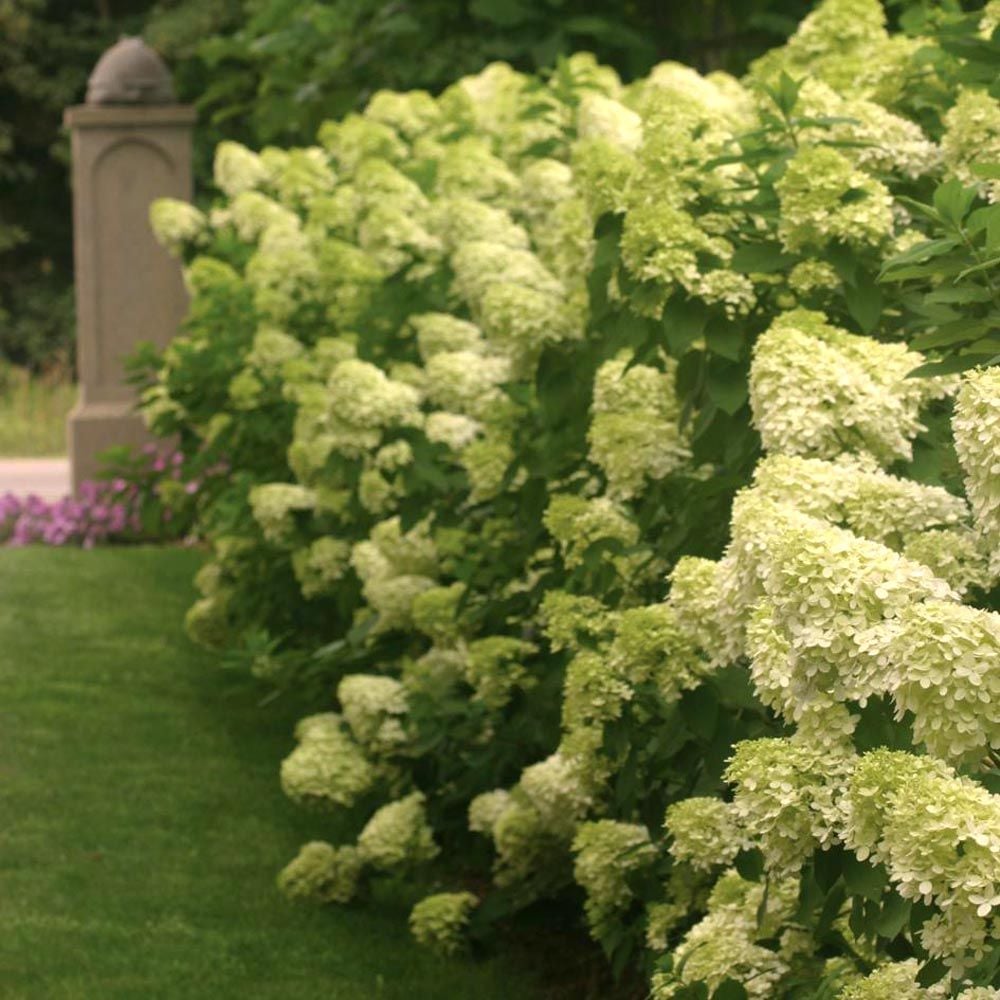
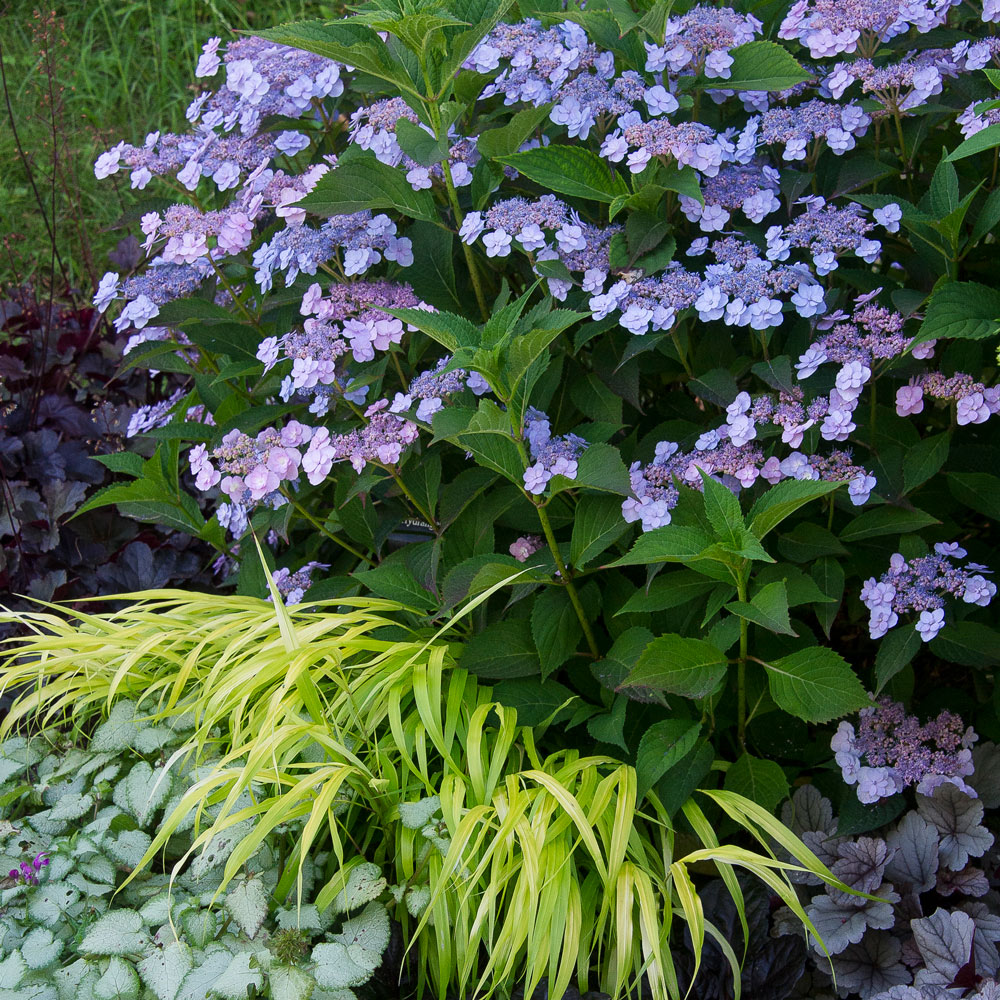
Hydrangea paniculata ‘Limelight’ (left) and Hydrangea serrata Tiny Tuff Stuff™ (right). Ray has a row of ‘Limelight’ at his home (“in the blasting sun”), so in July he watches the shrubs closely and makes sure to water them deeply on occasion. Tiny Tuff Stuff™, while able to take full sun, too, is very happy in its full shade home pictured above.
As with most plants, it’s critical to know the light conditions of your designated garden area before planting. Do you have full sun (6+ hours of direct sunlight per day) or partial sun (3-4 hours of direct sunlight per day)? Perhaps your area is mostly shade, with little to no direct sunlight at all. When it comes to Hydrangeas, the good news is that most varieties handle full sun to part shade. Mountain Hydrangeas (H. serrata) can also tolerate full shade. For most Hydrangeas that take full sun, afternoon shade and occasional deep watering during the hot, dry days of midsummer are recommended (in the South, they’re essential).
4. Know the scale of the Hydrangea you are seeking.
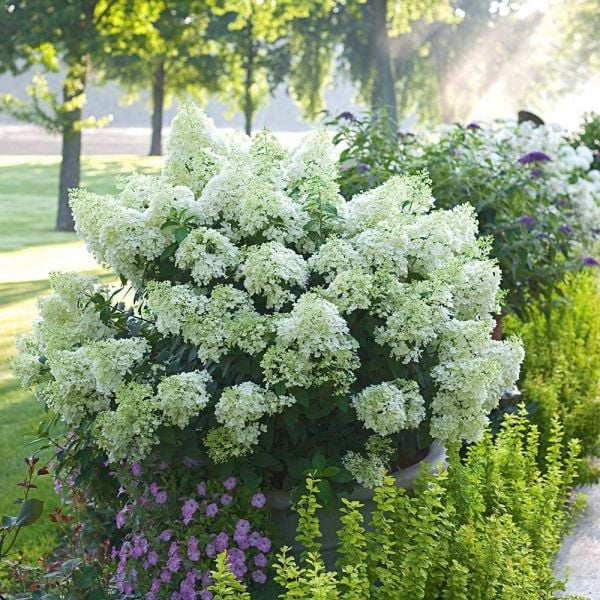
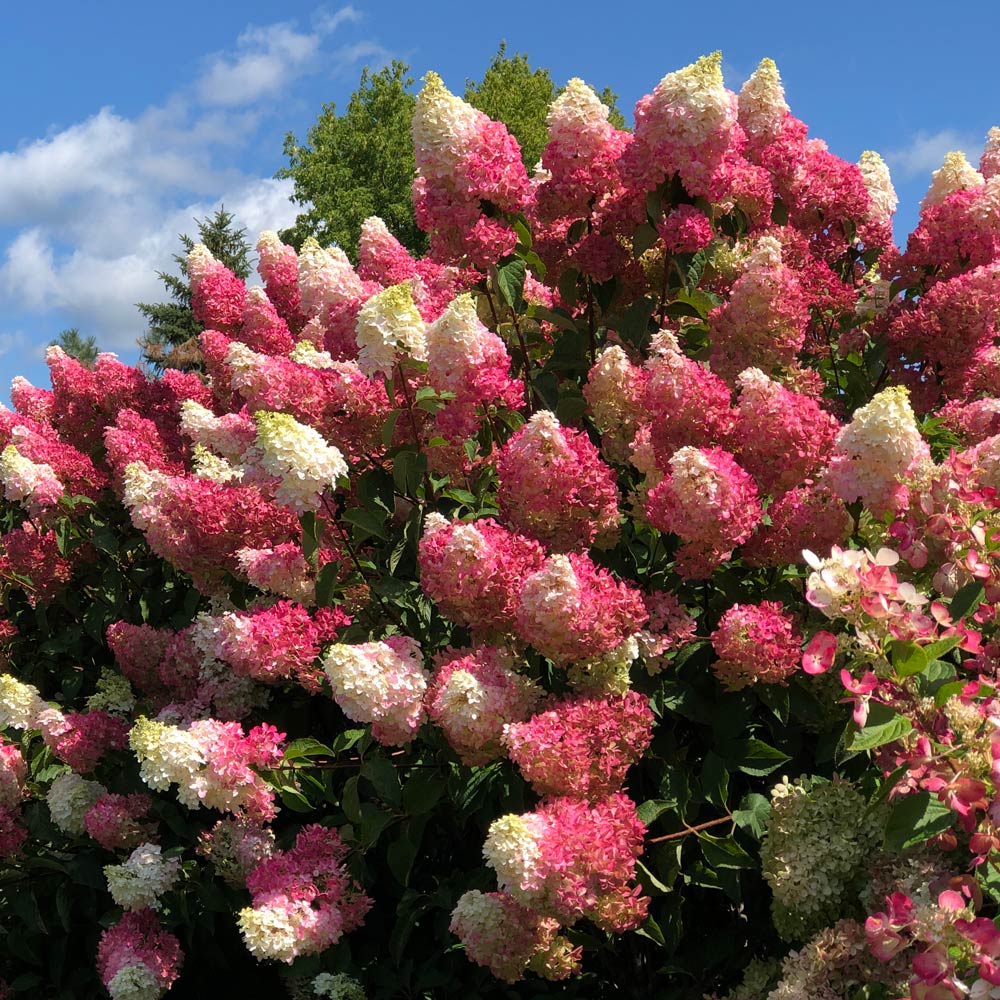
Hydrangea paniculata Bobo®, growing in a container (left), maxes out at 30-36” tall. Meanwhile, Hydrangea paniculata Berry White® (right) reaches 6-8’ tall. If Ray had to choose, Berry White® would probably be his favorite Hydrangea – but it’s a hard choice when you work with all of them.
What is the mature size you would like your Hydrangea to be? There is an increasing diversity of heights in the Hydrangea world. This is particularly true of H. paniculata cultivars, which range from 2’ to 8’ tall. Whether you want to fill a patio pot or a large gap at the back of a border, there likely is a Hydrangea to suit your needs.
5. Know when (and when not) to prune your Hydrangea.
It’s a sad fact: Garden shears can be your own worst enemy. Pruning at the wrong time can lead to lopping off next year’s flowers, or even the current season’s. To avoid this, you need to know whether your Hydrangea blooms on old and/or new growth (“wood”). To find that out, you can check our Growing Guides for each of the various kinds of Hydrangeas. There are pruning tips there, too.
In brief summary, Hydrangeas that bloom on new growth (such as H. arborescens and H. paniculata) are best cut back in fall or early spring. Ray further recommends this be done only in the first three years of growth (after that, leave them alone). For Hydrangeas that bloom on old growth (such as H. macrophylla and H. serrata), scaling back is best done in late August. Dead wood should only be removed after the new growth has emerged in spring (Ray suggests after Memorial Day). Finally, varieties that bloom on both old and new growth, such as the popular H. macrophylla Endless Summer® and Let’s Dance® series, can be pruned back like Hydrangeas that flower on old growth only. They also can be thinned in late August by cutting thick, older stems back to the ground.
For their splendid beauty and superior performance qualities, Hydrangeas are definitely worth knowing and growing. We hope the tips provided above will make it easier for you to know and grow – and help you love having – Hydrangeas in your garden.
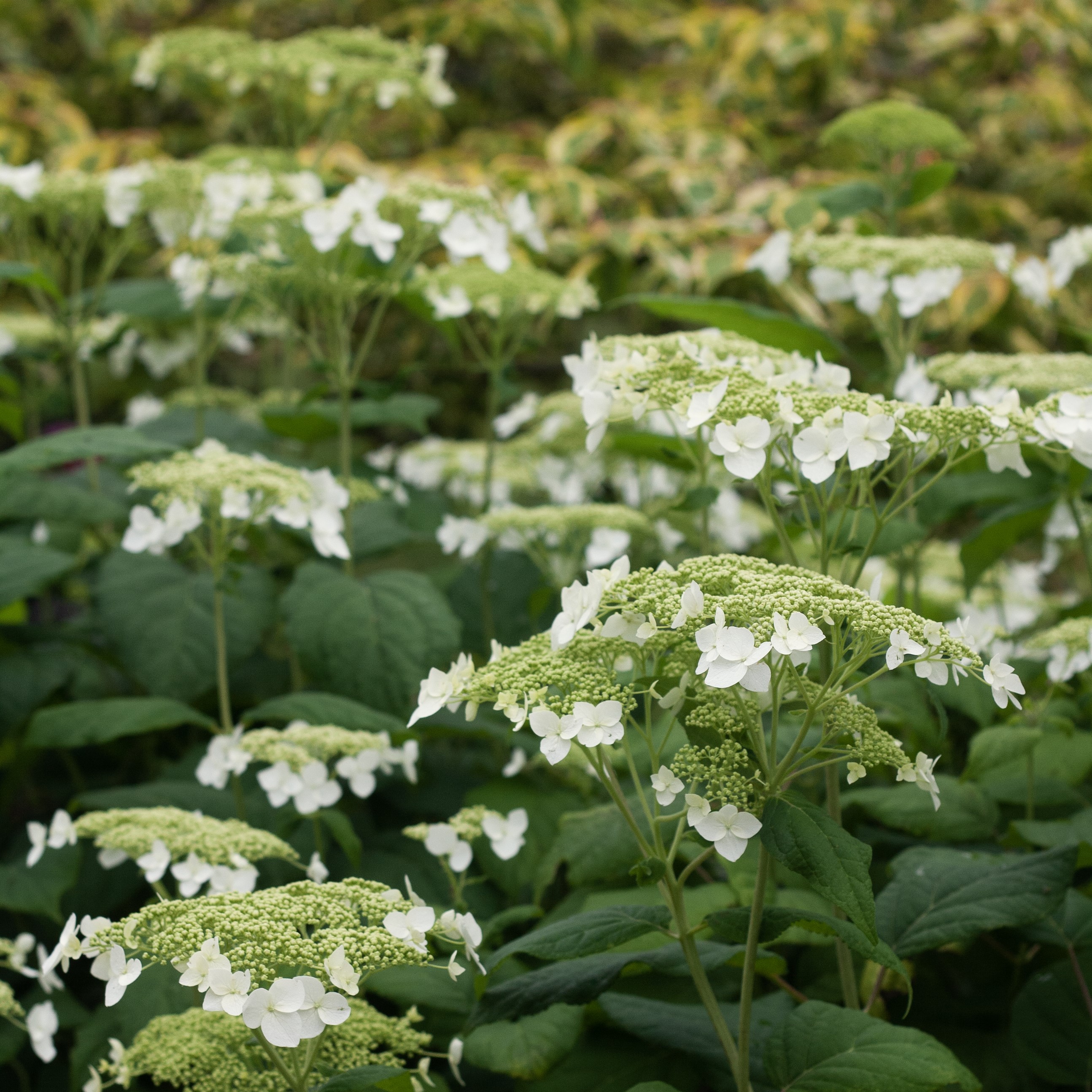
Hydrangea arborescens ‘Haas’ Halo’ flaunting elegant Lacecap flower heads in the gardens at White Flower Farm.

